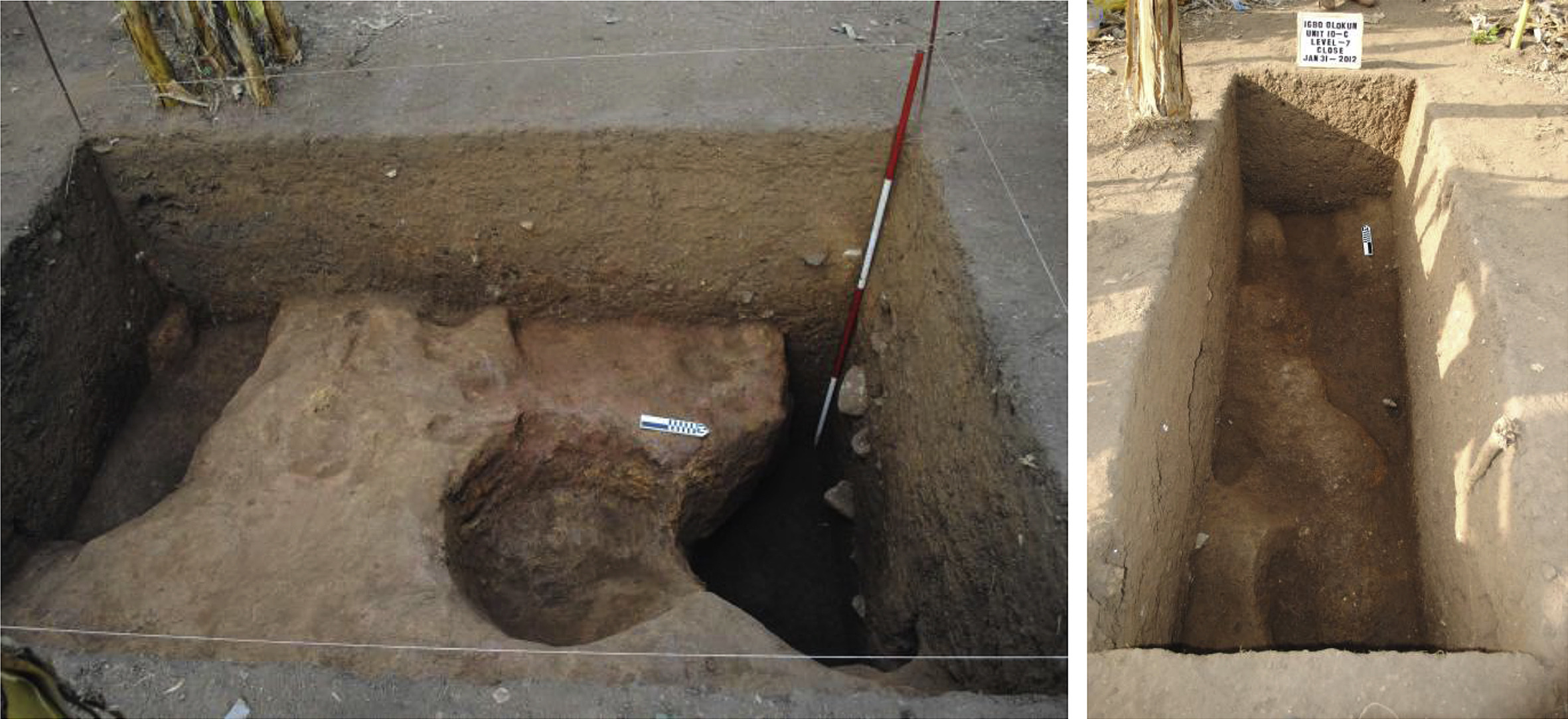
Glass Production in Nigeria between the 11th and 15th Century AD
Archaeological evidence found at Ile-Ife, Nigeria proves glass was produced in sub-Saharan African centuries before the arrival of Europeans. Glass-making was known to have occurred in southwestern Nigeria but it was previously widely believed that glass imported to Africa by Europeans, possibly for the use in the trade of slaves and goods, was simply remelted and reworked. This site in Nigeria provides the first solid evidence for primary glass production in sub-Saharan Africa.
 In a new study led by Abidemi Babatunde Babalola, a recent graduate of Rice University with a Ph.D. in anthropology and now a visiting fellow at Harvard University the evidence shows that Igbo Olokun on the northern periphery of Ile-Ife was a glass-working workshop for over a century. But Dr. Babalola and his research team discovered that the chemical composition of glass found in Nigeria differed in chemical makeup from glass produced in Europe. Their analysis of beads found in the area shows that glass was being produced in sub-Saharan Africa as early as the 11th century.
In a new study led by Abidemi Babatunde Babalola, a recent graduate of Rice University with a Ph.D. in anthropology and now a visiting fellow at Harvard University the evidence shows that Igbo Olokun on the northern periphery of Ile-Ife was a glass-working workshop for over a century. But Dr. Babalola and his research team discovered that the chemical composition of glass found in Nigeria differed in chemical makeup from glass produced in Europe. Their analysis of beads found in the area shows that glass was being produced in sub-Saharan Africa as early as the 11th century.
Abstract
The site of Igbo Olokun on the northern periphery of Ile-Ife has been recognized as a glass-working workshop for over a century. Its glass-encrusted crucibles and beads were viewed as evidence of secondary processing of imported glass until the high lime, high alumina (HLHA) composition of the glass was recognized as unique to the region. Archaeological excavations conducted at Igbo Olokun recovered more than twelve thousand glass beads and several kilograms of glass-working debris. Fifty-two glass beads from the excavated assemblage were analyzed by laser ablation-inductively coupled plasma-mass spectrometry (LA-ICP-MS) and scanning electron microscopy-energy-dispersive X-ray spectroscopy (SEM-EDS) to understand the chemical characteristics of the Igbo Olokun glass beads in comparison with previously analyzed beads. The analyses affirm the prevalence of HLHA glass beads, and provide firm evidence of a new compositional group characterized by low lime, high alumina (LLHA); no imported soda-lime glass beads were among the analyzed samples. The evidence from crucibles indicates that LLHA glass was worked together with HLHA glass at Igbo Olokun and may have been made locally as part of the same technological tradition. Most likely, granitic sand with or without added calcium carbonate was used to produce these two types of glass, and colorants rich in MnO, Fe2O3, CuO, and CoO were intentionally added. Its occurrence in other West African societies, and the presence of some soda-lime glass beads in other sites in Ile-Ife suggest that Ife was involved in regional and inter-regional networks during the early to mid 2nd millennium AD and possibly earlier.




1 Comment
by Claire
Remarkable. Education that speaks to one’s own culture & environment.
Comments are closed.